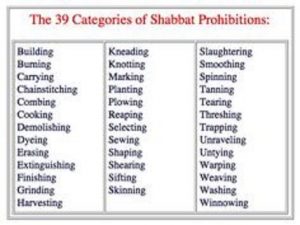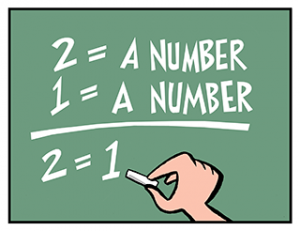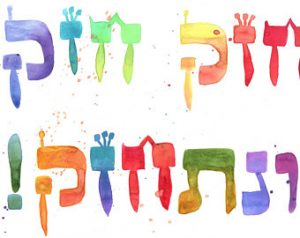Vayakhel – Pikudai 2021 – Chazak!
by devadmin | March 12, 2021 1:48 am
 We begin with a follow up mazel tov to the Grossman and Herszfeld families (Lisa &Yitz, Eilene & Yeruchem) upon the wedding this past Sunday of our daughter Alex to their son Jonathan. The young couple is off to Los Angeles for shabbis sheva brochis and to celebrate with friends Alex made while living there and waiting for Jon to appear on the scene. May they be blessed with only happy years together. Another mazel tov shout-out to grandparents Irv and Ellen Bader and to Murray and Estelle Appelbaum and to siblings, nephews and nieces on both sides. A special shout out yasha-koiach and thanks to those who organized sheva brochis earlier this week and of course, to all who joined us.
We begin with a follow up mazel tov to the Grossman and Herszfeld families (Lisa &Yitz, Eilene & Yeruchem) upon the wedding this past Sunday of our daughter Alex to their son Jonathan. The young couple is off to Los Angeles for shabbis sheva brochis and to celebrate with friends Alex made while living there and waiting for Jon to appear on the scene. May they be blessed with only happy years together. Another mazel tov shout-out to grandparents Irv and Ellen Bader and to Murray and Estelle Appelbaum and to siblings, nephews and nieces on both sides. A special shout out yasha-koiach and thanks to those who organized sheva brochis earlier this week and of course, to all who joined us.
40 minus 1
Just last week, the 5Towns Jewish Times and other Jewish sites and WhatsApp groups featured an article on the GE engineer who saved shabbis and lauded one of its executives for his work on helping to create the first over kosher for shabbis oven. See it here: https://www.theyeshivaworld.com/news/headlines-breaking-stories/1953913/the-engineer-who-saved-shabbos-kosher-refrigerators-and-ovens.html
 How can an oven or a fridge be kosher for shabbis? Don’t’ ask; seemingly it is designed to avoid at least one of the forbidden acts of labor on the shabbis. And for that reason, we shall take a shtikel dive into the various acts of labor forbidden on the shabbis. A real dive would require many hundreds of pages and is beyond the scope of this review.
How can an oven or a fridge be kosher for shabbis? Don’t’ ask; seemingly it is designed to avoid at least one of the forbidden acts of labor on the shabbis. And for that reason, we shall take a shtikel dive into the various acts of labor forbidden on the shabbis. A real dive would require many hundreds of pages and is beyond the scope of this review.
As you all zicher know, the first ever shabbis was marked by the RBSO back in Bereishis. He created the world in six days and rested on the 7th. And shoin: the concept of shabbis was born and the heylige Toirah will remind us over and again that we mustn’t work on the shabbis. He rested; we rest. Exactly how those simple instructions morphed into more forbidden acts on the heylige shabbis than one can count, and at least a few dozen books (some big and fat), pamphlets, and other exegesis discussing what can and cannot be done on the heylige shabbis, ver veyst? It’s the commandment that keeps on giving. It’s the commandment where the RBSO told us to but rest, remember it and watch it and a mob of rabbis ran with it. How that works, ver veyst? The instructions on ‘resting’ and what not to do while resting are not at all restful; farkert; they are at times quite stressful! Ober one thing is zicher: the proper observance of shabbis was taken over -efsher even hijacked- by our sages of the heylige Mishneh and Gemora who took simple instructions and created an entire industry based on shabbis observance. Let us also not forget the business opportunity it has created for shabbis goyim and many others. Like all else, shabbis is big business.
Ober, how taka did this all come about? And why taka did our sages conclude that there are 39 forbidden acts on the heylige shabbis. Who says there are 39? Vus epes 39 and which made the list? Are all other types of “work,” those not included on the “39,” permissible on the shabbis? Shoin, let’s begin here with this statement of fact: there are (so our sages tell us) indeed 39 categories of labor that are forbidden on shabbis. Ober, how did they arrive at the 39 ‘categories of labor? Let’s begin by reading the first three pisukim from this week’s double header parshas of Vayakhale and Pikudai. They close out Sefer Bereishis and by next shabbis we will be reading about various animal sacrifices; try controlling your excitement! Says the heylige Toirah (Shmois 35:1-3) azoy:
| 1. Moses called the whole community of the children of Israel to assemble, and he said to them: “These are the things that the Lord commanded to make. | אוַיַּקְהֵ֣ל משֶׁ֗ה אֶת־כָּל־עֲדַ֛ת בְּנֵ֥י יִשְׂרָאֵ֖ל וַיֹּ֣אמֶר אֲלֵהֶ֑ם אֵ֚לֶּה הַדְּבָרִ֔ים אֲשֶׁר־צִוָּ֥ה יְהֹוָ֖ה לַֽעֲשׂ֥ת אֹתָֽם: | |
| 2. Six days work may be done, but on the seventh day you shall have sanctity, a day of complete rest to the Lord; whoever performs work thereon [on this day] shall be put to death. | בשֵׁ֣שֶׁת יָמִים֘ תֵּֽעָשֶׂ֣ה מְלָאכָה֒ וּבַיּ֣וֹם הַשְּׁבִיעִ֗י יִֽהְיֶ֨ה לָכֶ֥ם קֹ֛דֶשׁ שַׁבַּ֥ת שַׁבָּת֖וֹן לַֽיהֹוָ֑ה כָּל־הָֽעֹשֶׂ֥ה ב֛וֹ מְלָאכָ֖ה יוּמָֽת: | |
| 3. You shall not kindle fire in any of your dwelling places on the Sabbath day.” | גלֹֽא־תְבַֽעֲר֣וּ אֵ֔שׁ בְּכֹ֖ל מֽשְׁבֹֽתֵיכֶ֑ם בְּי֖וֹם הַשַּׁבָּֽת: |
Ok and now what? Aside from not kindling a fire, do these pisukim contain any specifics? Not! Do they mention even one category of forbidden labor? Also not! What’s pshat? How did the day of rest become so complicated? In fact, following the shabbis instructions -not to perform any milocho (labor) on the shabbis, the heylige Toirah makes a full stop and begins another topic altogether- the building and erection of the Mishkan. There is no more mention of the shabbis in these two parshas. What is discussed? The various jobs and labor required in the building of the Mishkan. So far so good and then? Our sages decided that the opening instructions regarding the shabbis are directly related to, and are indeed the source of the connection between the prohibition of performing labor on the heylige shabbis and the labor involved in the Mishkan. You hear that? With that rabbi-made connection, the famous “39 categories of forbidden on the heylige shabbis labor” were derived. Moreover, our sages also tell us that these 39 actions are forbidden “min haToirah.” By simply connecting these different topics, the various types of labor needed to build the Mishkan are all verboten on the shabbis. In recent decades alone, myriad books, classes, and videos, have been written -for kids, teens and adults- and continue to be written each year by rabbis all over the world further illuminating these 39 forbidden (on the shabbis) acts and how they apply today to various technologies and new inventions. And everything you always wanted to know about shabbis -whether or not you can open a can, or how to wipe your tuchis once on the can, and, oh so much more, has been reduced to writing after being hotly debated.

From various discussions in the heylige Gemora, it is clear that this number is fixed and cannot be altered. Ober the unanswered question is this: How does the heylige Gemora arrive at a total of 39 categories of labor? What is the source of this precise number? And before we go digging for answers, let’s also keep in mind that when describing the forbidden Melochos of Shabbos, the Mishna (Shabbos 73a) says that there are “40-1” Melochos. Why not state there are 39? Is that not a shtikel strange way of telling us the number? Do you tell people I’m 60 minus 1? Or, you owe me $101 minus one dollar? Of course, the odd wording caught the attention of a few -nothing got by our sages- and here’s what a few had to say. The Toisfos Yom Tov weighs in with 3 (not 4 minus 1) answers. Says he (commentary to mishnayot Shabbos 7:2), azoy: Since the 39 lashes meted out for bad behavior are referred to as “forty minus one” (see Makkos 22a), the 39 Melochos are as well. Don’t like that answer? Let’s try another: Says the heylige Gemora (Shabbos 49b) that the number of Melochos is derived from the number of times we find the word “Melocho” in the heylige Toirah. Cute. Ober do we find the word but 39 times? Not! The heylige Gemora points out that it’s taka emes that the word Melocho appears 40 times; what’s pshat? Shoin, one can never outsmart the heylige Gemora which tells us azoy: it’s taka emes that the word appears 40 times but one doesn’t count. And for that reason, we may, and do say, there are “forty minus one” Melochos. Gishmak! Alternatively, pshat why we have 40-1 is azoy: One only performs the Melocho of sewing if one ties a knot at the end. Tying a knot is also a Melocho. Therefore, if someone transgresses all 39 Melochos he did two acts of tying knots. Pshat is azoy: it takes 40 transgressions to do all 39 Melochos. Chap? And that raboyseyee is a givaldig reason to learn the heylige Gemora; there’s always a way out!

Ober says the Mayim Chaim (not the same people who label a kosher soda brand under that name), azoy: There are actually two plowings done when planting a field. One before the sowing, and one after. Therefore, if someone transgresses all 39 Melochos, he did two acts of plowing. Again, it takes 40 transgressions to violate all 39 Melochos. The good news: not all plowing is forbidden on the heylige shabbis. Farkert: some say it’s a mitzvah to plow (the eishes chayil of course) on the shabbis. Ober one should not be caught plowing in another field, if you chap as that would take one over the top of the 40-1 list and would zicher result in serious consequences, if chapped.
And said Reb Aryeh Kaplan (zt”l) azoy: Chazal numbered the melochos as “40 missing 1.” But why? It could be a shorthand for 39, much the way the “i” is placed before the last “x” in the Roman numeral version “xxix”. People using Roman numerals would think of a number that ends in “9” as a “missing one” from the round number.
The bottom line, and remember this, is azoy: discussion in an entire tractate of the heylige Gemora dedicated to, and aptly named, Shabbos, led our sages to conclude that the number is fixed at 39. To get to 39, our sages of the Gemora included and excluded various activities, they brought several categories together under the same name, merged similar types of labor and separated others, all in order to reach a total of 39. Which got in and which not? And why? Shoin to explain all this, would require another 100 pages (at least) and would zicher bore you out of your minds. Veyter.
Let’s also ask this: Is the number 39 universally accepted? Not! Why not? Because a few rabbis decided that but 39 restricted activities weren’t enough and they came up with an expanded list of what not to do on shabbis. Who were these rabbis? Shoin, let’s meet Rebbe Yoichonon and Rebbe Shimon ben Lokish. Over in the Yerushalmi (another version of the heylige Gemora –this one redacted over in Jerusalem as opposed to the more popular version written over in Bovel (Babylonia)), they went so far as to enumerate 39 sub-categories for each of the 39 main categories. You hear that Raboyseyee? A few lines in the heylige Gemora (Jerusalem Talmud (Shabbis 7:2) tells us that Reb Yoichonon and R. Shimon ben Lokish spent three and a half years studying the Mishna about the 39 melochos, and they ended up deriving 39 subcategories (tolados) for each one of the 39 categories of Melocho. Whenever they were able to associate a subcategory of Melocho with one of the categories they did so; whenever they couldn’t, they would place it under the category of “striking with a hammer” (the rabbinic term for completing work, which functions as a catch-all in halacha). They proposed 39×39 shabbis restrictions! Yikes! The bottom line: they spent too much time in yeshiva.
Ober the shaylo remains: how did we (they) get to 39? They must be based on something; here is one view. Let us quickly read the following pisukim from our parsha (Shmois 35:10-19) where we find 39 categories of labor corresponding to the 39 labors associated with the Mishkan.
Every one who is wise of heart among you shall come and do all that G-d has commanded: (1) the Mishkan, (2) its tent, (3) and its covering; (4) its clasps (5) and its boards, (6) its bars, (7) its pillars and (8) its sockets. (9) The Ark and (10) its poles, (11) the covering, (12) and the veil of the screen. (13) The table, (14) and its poles, (15) and all its vessels, (16) and the showbread. (17) And the candelabrum for light (18) and its vessels, (19) and its lamps, (20) and the oil for light. (21) And the incense altar, (22) and its poles, (23) and the oil for anointing, (24) and the incense of the spices, (25) and the screen for the door at the entrance to the Mishkan. (26) And the altar of burnt offerings, (27) and its brazen grate, (28) its poles, (29) and all its vessels; (30) the laver (31) and its stand. (32) And the hangings of the court, (33) its pillars (34) and their sockets (35) and the screen for the door of the court. (36) The pegs of the Mishkan (37) and the pegs of the court (38) and their cords. (39) And the uniforms, for serving in the holy place – the holy garments for Aharon, the kohen, and the garments of his sons, to minister.
The Heylige Gemora (Shabbis 49b) quotes Rebbe Shimon ben Reb Yossi ben Lokonia, who teaches that the 39 categories of labor correspond to the total number of times that the words “melocho” (“labor”), “melachtoi” (“His labor”) and “meleches” (“the labor of”) are mentioned in the heylige Toirah. And where do these words mostly appear? When describing the various works required to build and erect the Mishkan. Ober, the Rishonim (earlier sages) question this assertion, for the total number of appearances of these words in the heylige Toirah is 61, and not 39. Were they bad at math? How taka did they come to 39 when the words above appear 61 times? Taka a good kasha. The bottom line: not every appearance of these chosen words counts, and shoin.
Another pshat: the heylige Gemora (also in the Yirushalmi 7:2) mentions that the count of 39 is derived from the words, “Eleh ha-devarim” (“these are the things/words”): “devarim” implies two (since it is in the plural); “ha-devarim” adds something to that, i.e., it equals 3. The numerical value of the word “eleh” (“these”) is 36. Thus, 36 + 3 = 39. Is that it? From some simple gematria plus some fuzzy math, our rabbis came up with 39 forbidden acts? Is that how it went down? Our “39 categories of labor” is based on that? Ober, we can ask azoy: Does the use of the phrase “these are the things” found in the heylige Toirah (Shmois 19:6) when discussing Revelation (Matan Toirah), or in the opening of Sefer Devorim (1:1) mean that there are 39 things there as well? Seemingly, that is what the gematria should imply! In other words: if we’re using this term to derive 39 forbidden acts, does it imply that 39 things were also involved in Revelation or in the appearance of these words in Sefer Devorim? That is what the gematria should imply! Rather it seems clear that the Gemora begins with the number and finds the gematria. The bottom line: fuzzy math! Moreover, these theories, while entertaining to read, cannot be taken too seriously when trying to understand why our sages decided to give us a list of 39 forbidden acts of labor on shabbis.
The bottom line: the forms of work forbidden on the heylige shabbis and whether there is even a fixed number of them, is hotly disputed in the Tannaic period. Today, Judaism follows the opinion Rebbe Akiva and his students who concluded that the number is 39. They struggle mightily to come up with sources, argue back and forth over different theories on why and how they got to this number, and here we are. In many cases, our sages forced any accepted form of Melocho into the rubric of 39 melachos. To keep the list to the proper number, they included some and excluded others, they covered more than one type of work under a single name or in one overarching category, or they separated similar forms into different categories. In the end, the sum always ends up equaling the preexisting correct number, 39.
The final bottom line: dozens of pages more can be written over the origins of the 39 forbidden acts of labor and derivates thereof. Ober, because we have this list, and because that list seemingly and somehow includes issues with refrigeration, warming foods on shabbis, tearing toilet paper, and so much more, and because companies like GE recognized -as have thousands of Yiddin- that these acts -in the bottom line- all translate to business opportunities to serve the orthodox community who buy these items (and rent them by the many hundreds each year in Orlando because one refrigerator and freezer cannot hold the food to be consumed over 8 days Pesach plus a few days, in the end, all Toirah restrictions are bust business opportunities for Toirah inspired entrepreneurs. The RBSO wanted to make sure that His people made a living. Therefore, He also gave us Toirah she-baal peh (the Oral tradition). Oral is good! He wanted his people to do well, to be enterprising but to find such success, one needs to toil away at the folios of the heylige Gemora to chap the opportunities. The RBSO is great!

Chazak, chazak, v’nischazake!
The Heylige Oisvorfer Ruv
Yitz Grossman
Source URL: https://oisvorfer.com/vayakhel-pikudai-2021-chazak/